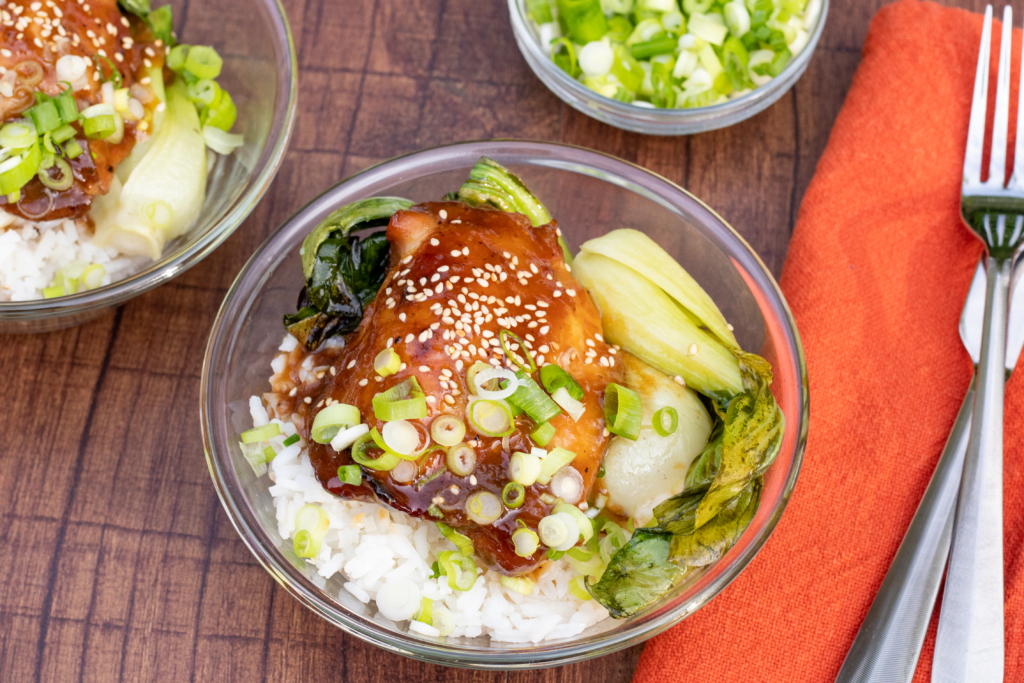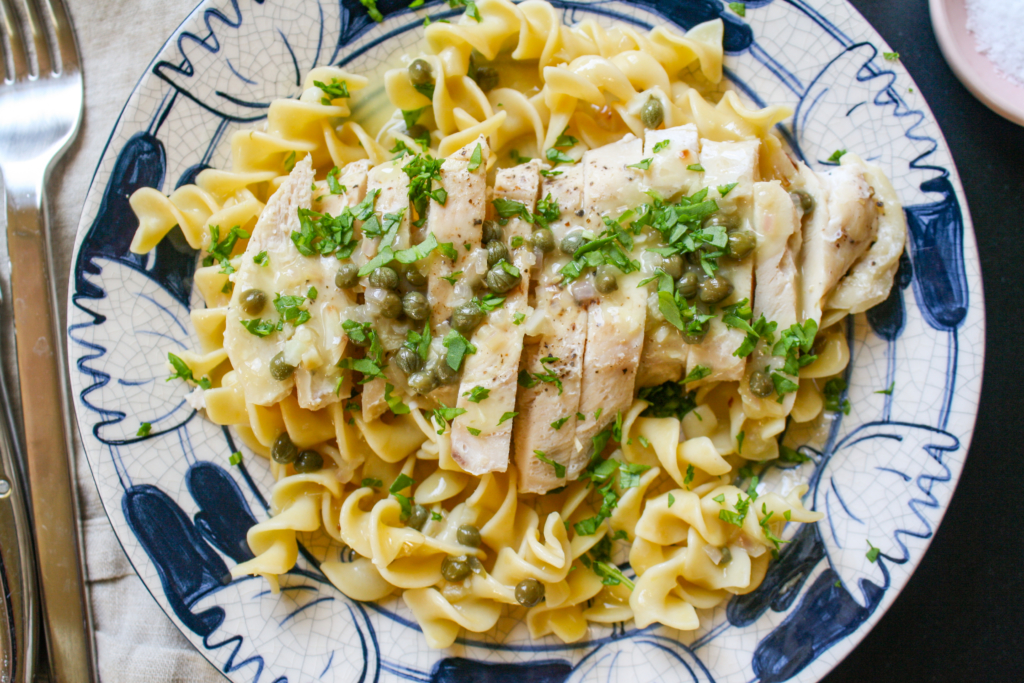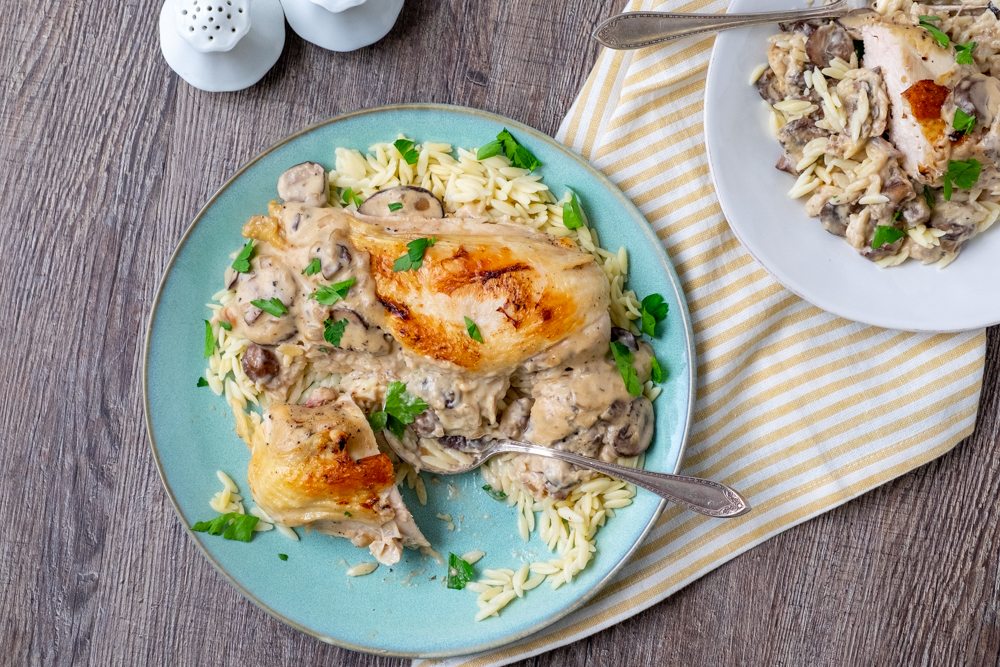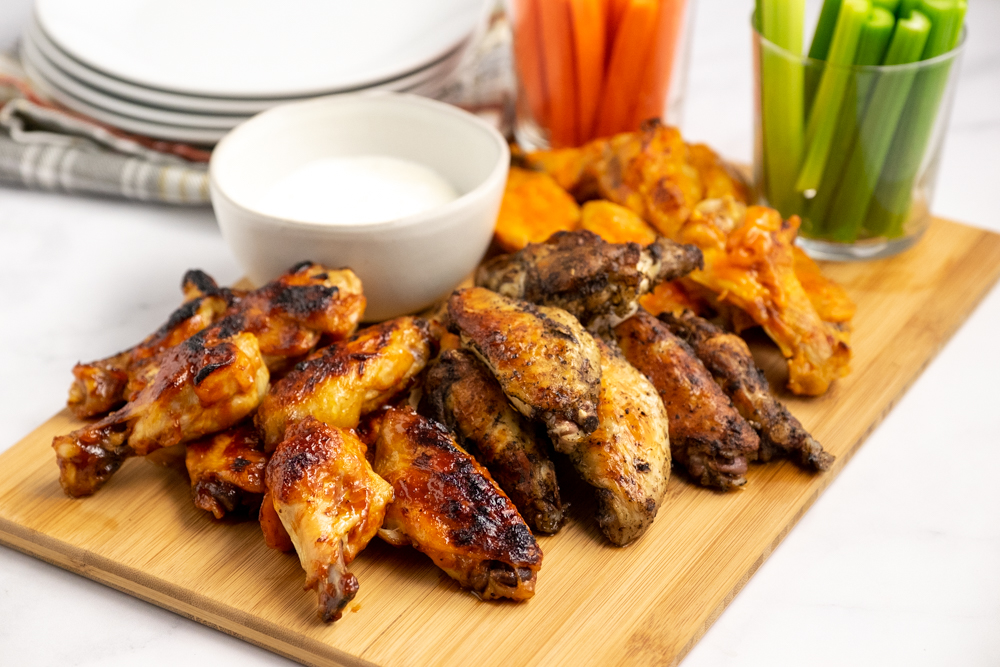Tender, juicy, versatile, and an all-round crowd-pleaser, chicken is the home chef’s best friend. Chicken is also ideally suited to the sous vide cooking technique. Using this simple cooking method, breasts, thighs, drumsticks, and wings can all be cooked to the perfect level of doneness while retaining all their moisture. Sous vide adds a layer of control and precision that allows you to prepare any type of chicken to the exact level of doneness you prefer.
Here’s how to cook chicken using sous vide.
1. Chicken Breast Cooking Temperatures and Times
2. Chicken Thigh Cooking Temperatures and Times
3. Chicken Wings Cooking Temperatures and Times
4. Chicken Drumsticks Cooking Temperatures and Times
5. Ingredients and Tools
6. Preparation
7. Suvie Directions
8. Immersion Circulator Directions
9. Finishing
10. Recipes
11. FAQs
Chicken Breasts

When it comes to planning your weekly meals you can’t go wrong with the humble chicken breast. As delicious and versatile as they are ubiquitous, there are thousands of ways to serve this dinnertime staple. The only major downside of chicken breasts is their tendency to dry out when overcooked. That’s where sous vide comes in. Cooking chicken breasts using Suvie or sous vide allows you to cook them to the exact level of doneness without fail.
| Temperature | Time | Result |
| 150˚F* | 1-3 hours | Very juicy, soft and tender |
| 155°F | 1-3 hours | Very juicy, tender |
| 160°F | 1-3 hours | Firm and juicy |
| 165°F | 1-3 hours | Firm but less juicy, slighty stringy |
There’s no limit to the length of time you can sous vide chicken breast, however, if left in the bath for too long the texture will become tacky and unpleasant.
Chicken Thighs

Chicken thighs really are one of the most underrated cuts of meat. Juicy and meaty, this under-appreciated protein is wonderfully versatile, not to mention extremely affordable. Chicken thighs are also far more forgiving than breasts which are prone to drying out if even slightly overcooked.
We recommend cooking chicken thighs at least 160°F.
| Tempurature | Time | Result |
| 155°F* | 1-3 hours | Very juicy, firm |
| 160°F | 1-3 hours | Tender and juicy |
| 165°F | 1-2 hours | Extremely tender but less juicy |
Like most sous vide meats, the longer you cook, the more tender your meat will become. Chicken thighs won’t overcook when left in the sous vide bath, however, their texture may become unpleasant if left for too long.
Chicken Wings

Nothing screams Summer like a pile of crispy chicken wings doused in buffalo sauce. If you’re craving a plate of wings but don’t want to worry about cooking them through or drying them out then sous vide or Suvie is way to go. Using the sous vide method, followed up with a quick deep fry or broil will result in wings that are crispy on the outside and fall-off-the-bone tender on the inside.
| Tempurature | Time | Result |
| 155°F* | 1-3 hours | Very juicy, firm |
| 160°F | 1-3 hours | Tender and juicy |
| 165°F | 1-3 hours | Extremely tender but less juicy |
Chicken wings are forgiving meats to sous vide so they are a great place to start for beginners.
Chicken Drumsticks

Tender, juicy, and incredibly easy to cook, chicken drumsticks the low-key MVPs of the kitchen. While they are often upstaged by the popular breast and wings, drumsticks, like chicken thighs are versatile, affordable, and incredibly tasty if cooked correctly.
| Tempurature | Time | Result |
| 155°F* | 1-3 hours | Very juicy, firm |
| 160°F | 1-3 hours | Tender and juicy |
| 165°F | 1-2 hours | Extremely tender but less juicy |
Chicken drumsticks, like wings, are very easy to sous vide.
*Please note that some of these temperatures are lower than what the FDA recommends. Consuming raw or undercooked meats, poultry, seafood, shellfish, or eggs may increase your risk of food-borne illness.
Ingredients and Tools
- Chicken pieces
- Salt
- Pepper
- Fresh herbs such as thyme, rosemary or sage
- Vegetable oil
Equipment
- Suvie or immersion circulator
- A large pot (if using a sous vide wand)
- Vacuum sealer and bags or Freezer safe sealable plastic bags
Preparation
If you’re using an immersion circulator, pre-heat your water bath to the desired temperature
Pat chicken dry and season with salt and pepper.
Place chicken in a plastic bag, add any herbs you intend on using and vacuum-seal.
Follow our guide if you are using the water displacement method.
Suvie Directions

Place the bag into the Suvie protein pan and cover with water. Place in Suvie and use the following settings:
Suvie Cook Settings
Bottom Zone: Sous Vide at 150-165 °F for 1-3 hours (based on desired doneness)
Top Zone: Sous Vide at 150-165 °F for 1-3 hours (based on desired doneness)
Once the cook is finished, remove the chicken from the water bath or pan.

Remove the chicken from the bag and pat dry with a paper towel.
Immersion Circulator Directions
Once the immersion circulator has reached the required temperature, gently lower the plastic bag into the water. Ensure that the plastic bag is not touching the metal rod of the immersion circulator.

Once the cook is finished, remove the chicken from the water bath. Remove the chicken from the bag and pat dry with a paper towel.
Finishing
Suvie
If you’re using your Suvie, place the chicken in your protein pan and place them under the broiler for 10 minutes on each side. If you prefer extra crispy skin broil for an additional 10 minutes, checking often to ensure that the chicken doesn’t burn.
Pan
Alternatively, heat some vegetable oil in a cast-iron skillet over medium-high heat. You’ll want to use an oil with a high smoke point such as vegetable oil while avoiding olive oil if possible.
Place the chicken in the hot pan, skin side down in the case of thighs and breasts, being careful to avoid any splashing oil. Press the chicken down with a spatula or with your fingers to make sure as much of the skin is making contact with the pan as possible.

Cook until the skin is crispy, about 5 minutes each side.
Deep Fry
This method works best for chicken wings, but can also be applied to other chicken pieces.
Place the chicken pieces on a wire rack and store in the fridge for at least 8 hours.
Heat some vegetable or groundnut oil in a cast-iron dutch oven. You’ll need just enough oil to completely the submerge the chicken, around 2 inches deep. Heat the oil to at least 375°F. Carefully, using a slotted metal spoon, place a few pieces into the oil. Cook in batches for about 3-10 minutes per batch (wings can be cooked for 3 minutes, breasts and thighs will need to be cooked for longer). Remove using a slotted spoon and place on a paper towel.

Recipes
Teriyaki Chicken Thighs

Curried Chicken Salad

BBQ Chicken with Macaroni Salad

Thai Chicken Salad

BBQ Chicken Drumsticks with Creamed Corn

Yellow Chicken Curry

Cobb Salad

Chicken Piccata

Chicken Parm

Chicken Saltimbocca

Sesame Chicken

Creamy Mushroom Chicken

Mediterranean Chicken Bowl

Crispy Chicken Breast with Wild Rice, Cranberry and Apple Salad

Chicken Wings

Chicken Cacciatore

FAQs
Is it safe to cook chicken below 165°F?
The USFDA recommends cooking chicken to an internal temperature of 165°F. Foodborne bacteria will be killed almost immediately at this temperature which makes it the safest. However, chicken cooked to lower temperatures for longer periods of time are just as safe. If you want a slight moister chicken thigh you can safely cook it to 155°F provided it stays at that temperature for at least 2 minutes.
Can I use any type of plastic bag?
You can, however, make sure that they are made from polyethylene. Some branded bags are made using polyethylene which is a BPA and dioxin free plastic that can safely handle sous vide cooking temperatures up to 190°F. Some generic branded plastic bags are made using cheaper polyvinyl chloride (PVC) which cannot handle high temps and contains chemicals that can leach into food.
Can I use frozen chicken?
Yes! This technique will work with frozen chicken pieces. If you’re cooking straight from the freezer just add an additional hour to the sous vide time.
Can I refrigerate the chicken after the sous vide process and sear it later
For food safety reasons, we recommend consuming your chicken soon after cooking.



